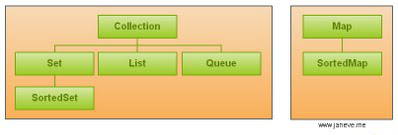We all know that interfaces in Java contain only method declarations and no implementations and any non-abstract class implementing the interface had to provide the implementation. Lets look at an example :
public interface SimpleInterface {
public void doSomeWork();
}
class SimpleInterfaceImpl implements SimpleInterface{
@Override
public void doSomeWork() {
System.out.println("Do Some Work implementation in the class");
}
public static void main(String[] args) {
SimpleInterfaceImpl simpObj = new SimpleInterfaceImpl();
simpObj.doSomeWork();
}
}
Now what if I add a new method in the SimpleInterface?public interface SimpleInterface {
public void doSomeWork();
public void doSomeOtherWork();
}
and if we try to compile the code we end up with:$javac .\SimpleInterface.java
.\SimpleInterface.java:18: error: SimpleInterfaceImpl is not abstract and does not
override abstract method doSomeOtherWork() in SimpleInterface
class SimpleInterfaceImpl implements SimpleInterface{
^
1 error
And this limitation makes it almost impossible to extend/improve the existing interfaces and APIs. The same challenge was faced while enhancing the Collections API in Java 8 to support lambda expressions in the API. To overcome this limitation a new concept is introduced in Java 8 called default methods which is also referred to as Defender Methods or Virtual extension methods.Default methods are those methods which have some default implementation and helps in evolving the interfaces without breaking the existing code. Lets look at an example:
public interface SimpleInterface {
public void doSomeWork();
//A default method in the interface created using "default" keyword
default public void doSomeOtherWork(){
System.out.println("DoSomeOtherWork implementation in the interface");
}
}
class SimpleInterfaceImpl implements SimpleInterface{
@Override
public void doSomeWork() {
System.out.println("Do Some Work implementation in the class");
}
/*
* Not required to override to provide an implementation
* for doSomeOtherWork.
*/
public static void main(String[] args) {
SimpleInterfaceImpl simpObj = new SimpleInterfaceImpl();
simpObj.doSomeWork();
simpObj.doSomeOtherWork();
}
}
and the output is:Do Some Work implementation in the class DoSomeOtherWork implementation in the interfaceThis is a very brief introduction to default methods. One can read in depth about default methods here.
References :
- Introduction to default methods defender methods in java-8
- In-Depth Details about Default Methods - OpenJDK


